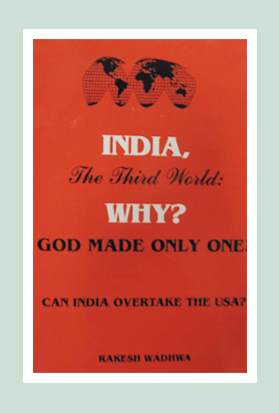SAARC not required
Governments worldwide have treaties for removal of trade restrictions. The European Union (EU) and North America free trade Agreement (NAFTA) are examples.
We too are following the example of these and other regional blocs. We have the South Asian Association for Regional Cooperation (SAARC). Further, each of the seven countries comprising SAARC has its own bilateral agreements with other countries.
Do we need the government to ‘manage’ free trade? Must we have treaties before we open our borders to imports? Would unilateral free trade harm us?
Let us look at countries which are open to trade without bothering about reciprocity. Whenever countries have eliminated tariffs and cut regulations hindering trade they have gained irrespective of what other countries did.
Hong Kong and Singapore practiced unilateral free trade much before these treaties came into fashion. They still do.
Singapore has an average tariff rate of less than one percent. 96% of all imports are duty free. There are no import quotas. License requirements exist for only a handful of items.
Hong Kong is duty-free and levies no duties except on tobacco, alcohol and fuel. The average rate of tax on imports is below even Singapore’s and close to zero. There are no licensing requirements or other barriers.
These two dots on the map prove that you do not need treaties to benefits from free trade. If free trade was good only if your trading partners practiced it, then, Hong Kong and Singapore would both have perished under the onslaught of free imports flooding their territories.
Far from perishing both have thrived. Yes, their imports are huge, Singapore’s imports in 2004 were $164 billion, Hong Kong’s was showered with goods from all over the world with imports of $ 300 billion in the same year.
These duty free imports allowed the puny ‘Davids’ to become trading ‘Goliaths’. Singapore in 2004, exported goods and services valued at US $ 180 billion, Hong Kong was one of the world’s dominant trader with its exports at US $ 311 billion.
If your imports are duty free, you automatically become a low cost producer of everything. It does not take an Einstein to figure out that with this advantage you will become a big exporter as well.
Imports and exports go hand in hand. India, after trade liberalization in the 90’s has seen its trade multiply. This happened even though India is still highly regulated and duties on imports are amongst the highest in today’s world. When India was almost closed to imports, its currency reserves fell to zero and it had to pawn its gold reserves to fund its ‘essential’ imports of oil etc. Now, its foreign currency reserves are US $ 140 billion.
The United States average tariff in 2004 was 1.8%. Though the US is not as free as Singapore or Hong Kong, as it does maintain restrictions on imports of textiles, beers and wines, cotton, chocolates and other items, the US by global standards has a low level of ‘protection’ from imports.
The US imports in 2004 were the highest in the world at US $1.63 trillion, its exports too were the highest at US $1.06 trillion. Imports exceeded exports by US $570 billion. This ‘deficit’ was higher than any other country’s. No one minds, as countries are happy to send goods to the US for its paper – the US dollar.
Did the US suffer because of its imports? No. Its people enjoy the world’s highest standard of living with access to cheap goods from all over the world.
Anytime trade restrictions are removed we gain. Therefore, treaties if they bring down trade barriers help in improving our standard of living. If SAARC was to bring free trade to this region well and good.
However, as India and Pakistan are unlikely to come together, it is doubtful whether any free trade agreement can be worked out amongst the SAARC nations. Fortunately, Nepal does not have to wait for this to happen.
All Nepal has to do is to unilaterally remove restrictions and custom duties on imports and it will become a trading giant. Cheap imports would allow Nepalese to become competitive exporters and with the markets provided by India and China, Nepal needs to look no further.
The Himalyan Times
Trade will make us rich
Countries which trade are rich. Countries which don’t are poor.
If I were to pick up one indicator of the wealth of a nation, that would be its exports and imports. Consider India: its share of world trade which was 2.5% at the time of its Independence, had plummeted to 0.45% by the late 80s.
It was a pathetic performance. India, with 16% of the world’s population, would have had to increase its imports and exports by 32 times to just reach the world’s ‘average’. India remained poor – its people had to survive on less than a dollar a day.
Compare this with a ‘dot’ on the globe: Singapore. With a population of just 4.2 million, its imports and exports are double that of India’s. This translates to each Singaporean trading, on average, 500 times more than an Indian. No wonder an average Singaporean lives comfortably, enjoying an annual income of over US$ 25,000.
Some say that the comparison with Singapore is not apt. Let us compare China with India. ‘Anti-capitalist’ China’s trade with the world has burgeoned to a trillion dollars, five times that of India’s while China’s population exceeds India’s by just 28%. Chinese now enjoy an annual income which is more than twice that of the Indians while just three decades ago the Chinese were poorer.
Contrast Nepal with Switzerland. Both countries are landlocked, but, the similarity ends there. Again trade provides an indication of why Nepal lags behind. Nepal’s imports and exports don’t add upto even three billion dollars. Switzerland’s figure is 326 billion dollars.
On a per person basis, the comparison is even more stark. Each person in Switzerland trades 400 times more than a Nepali. Switzerland’s per capita annual income at US$ 35,000 is one of the world’s highest.
Trade is not the only reason for Switzerland’s wealth. Their banking laws which guarantee anonymity to the depositor also have a lot to do with the Swiss being rich. However, trade plays a significant role.
Why are Singaporeans and the Swiss such good traders, achieving a prodigious percentage of the world’s trade, while the Indians and Nepalese are bit players and do not count? High taxes and stifling controls pursued by Nepal and India compared to the free market, low tax policies (average import duty is below one percent) of Singapore and Switzerland is the reason.
India, upto 1990, was ‘protected’ by the world’s highest tariff rates, import bans on all consumer products, and an inefficient and corrupt bureaucracy bent upon controlling trade.
The results of this ‘protection’ were obvious. Indians who would buy from a Scot and sell to Jew and still make a profit had no opportunity to do so in the world markets.
Post 1990, India began to see sense, but only after its policies had brought the economy to a shuddering halt. It had no foreign currency left and had to pawn its gold reserves. India liberalized and very soon its trade took off and dollar reserves started accumulating.
Within 15 years India achieved what it could not do in the earlier five decades. Its share of world trade has increased to 0.8% and foreign exchange reserves have crossed the 140 billion dollar mark starting from almost nothing.
If this was achieved with only a modest reduction of controls and import duties, consider what can be attained by the abolition of all controls and taxes on trade.
The good news for Nepal is that it can rewrite its laws tomorrow. There is nothing stopping this country from emulating Singapore and eliminating its trade barriers.
The government has to do just this and then watch the people of this country take to trade as a child takes to candy. Nepal will have shopping malls no less full of merchandise than Singapore. Goods will be cheaper too as both labour and real estate are priced lower.
Further Nepal will get as many tourists as it can handle. Why should people from India, Bangladesh and Pakistan go to Singapore, Hong Kong or Dubai when they can come to Nepal with its warm, hospitable people, majestic mountains, and, yes, cheaper perfumes too.
The Himalyan Times
 Rakesh Wadhwa. Ever since, I was a school boy, I knew India was on the wrong path. Socialism was just not what we needed to get ahead. Government controlled our travel; government controlled our ability to buy and sell; and government controlled our freedom to move our money. My life has focused on the inherent rights people have. When I was in college, I never understood, what the governments meant by their "socialistic attitude". If people are free to buy, sell and move their capital themselves without any restrictions by state, then the welfare of people is inevitable & hence the countries they live in will become wealthy. The government has no right whatsoever, to point a finger at me or my business. I am not a revolutionary. I just want to light up my cigarette and not get nagged about it. I believe in non-interfering attitude to attain more.
Rakesh Wadhwa. Ever since, I was a school boy, I knew India was on the wrong path. Socialism was just not what we needed to get ahead. Government controlled our travel; government controlled our ability to buy and sell; and government controlled our freedom to move our money. My life has focused on the inherent rights people have. When I was in college, I never understood, what the governments meant by their "socialistic attitude". If people are free to buy, sell and move their capital themselves without any restrictions by state, then the welfare of people is inevitable & hence the countries they live in will become wealthy. The government has no right whatsoever, to point a finger at me or my business. I am not a revolutionary. I just want to light up my cigarette and not get nagged about it. I believe in non-interfering attitude to attain more. 
 The Bastiat Award is a journalism award, given annually by the International Policy Network, London. Bastiat Prize entries are judged on intellectual content, the persuasiveness of the language used and the type of publication in which they appear. Rakesh Wadhwa won the 3rd prize (a cash award of $1,000 and a candlestick), in 2006.
The Bastiat Award is a journalism award, given annually by the International Policy Network, London. Bastiat Prize entries are judged on intellectual content, the persuasiveness of the language used and the type of publication in which they appear. Rakesh Wadhwa won the 3rd prize (a cash award of $1,000 and a candlestick), in 2006.
What the readers are saying…